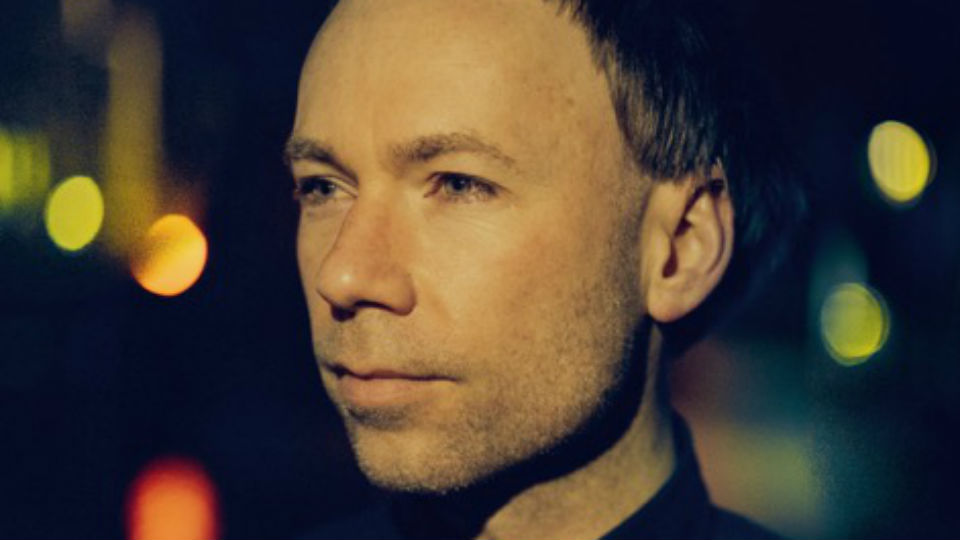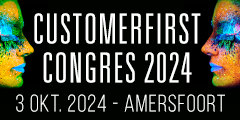Smith (Cloudfactory): 'Brands should think harder before they speak'

- Bureaus
- 18 mei 2018 @ 11:13
- Link
-
Sjaak Hoogkamer
hoofdredacteur
MarketingTribune - Geen tag
- 18 mei 2018 @ 11:13
- Sjaak Hoogkamer
According to creative director James Yeats Smith, following a recent move from Anomaly to international creative studio Cloudfactory, brands need to think harder before they speak. MarketingTribune asked him why.
A South African export living in creative epicentre Amsterdam, James Yeats Smith (aka JYS) is a CD with a wealth of international experience that has shaped his view on the ‘obligation’ brands have to society. Following a recent move from Anomaly to international creative studio, Cloudfactory, JYS unravels why the world needs more thinking brands.
.jpeg)
Why should brands think harder before they speak?
‘There’s a lot of terrible advertising in the world. But before there’s terrible advertising, there’s usually a brand adrift without a clear purpose. If a brand doesn’t have an understanding of why it exists, it can’t add value to anyone. And that’s dangerous. That’s when advertising pollutes society. Finding the centre of gravity takes a lot of time, thought and reflection. But once it’s unearthed, meaning always follows.’
So when ís a brand valuable?
‘Meaningful brands have a higher order to what they do, a reason for being that transcends the simple exchange of goods and services for compensation. Brands that are able to self-examine and understand the relevance they have in people’s lives are worth having around. Ones that don’t, aren’t. I respect brands that have a point of view on the Zeitgeist – what it is, what it could be, or where it should go. Political malfeasance has dominated culture of late and truth and trust is in short supply. In that respect, The New York Times has an ironclad purpose and point of view. Danish brand, Bianco, on the other hand holds up a black mirror to the world with this topical take on the status quo.’
That can come across as rather lofty. What if you’re just selling a 50c bag of crisps?
‘You don’t have to save dolphins to have a meaningful purpose. The question is simply why you’re selling crisps. Is it because: a) you love crisps and make the crispiest crisps, b) you hate crisps and want to get rid of them, c) you have mixed feelings about crisps and are re-evaluating your life choices. Any of these reasons can be the beginnings of a brand purpose as long as it’s true.’
What’s the role of creative agencies in this equation?
‘By definition creative agencies act as proxies / connectors for brands, but the best ones act as agents for the public too. They help hone the reason why a brand exists in a way that is true to its origins, but also in a way that is relevant to people right now. Often brands and their agencies get entangled in a web of analysis and circular logic forgetting that we’re really just speaking to people. People who feel more than they think. Good agencies help brands think, but the best agencies also help them feel.’
Give me a few brands that stand for something more…
‘I love visiting independent brands and meeting the people who make it happen. I was in Detroit last year and Shinola made a big impression on me. Their mission is to restore Detroit’s marginalised workforce to some of its former glory, while making exceptionally crafted watches, bicycles and leathery things. In a similar trend the Hiut Denim Co. is another beautiful brand that I had the pleasure of experiencing first hand in Cardigan, Wales. They make a damn fine pairs of jeans, while re-tooling local denim craftspeople side-lined by cheap manufacturing. While those brands are both about putting people back to work, something less high-brow caught my eye that reminded me that laziness can be a purpose too.’
You said earlier: ‘To provoke thought in others, I need to do a lot of thinking first.’ What kind of thinking is that, can you elaborate on that?
‘It’s less a kind of thinking and more a process of distillation. Getting to the essence of something takes time.’
How much time?
‘How long is a piece of string? It changes brief to brief. Sometimes you need a day, a week, a month (or six), sometimes a year.’
You also said the thinking will lead to creativity. How do you actually stimulate creativity within yourself?
‘I used to think I could stimulate creativity consciously, but I’m not so sure anymore. I’m starting to feel that it’s much more unconscious and mysterious – like a process that doesn’t want to be understood. It’s quite a romantic point of view.’
As a creative director, how do you stimulate creativity within your teams?
‘Creativity is not a chore, nor should it ever feel like one. I try and remove the obstacles that make it seem that way sometimes. In my experience people are much more creative when they’re encouraged to:
- Be unavailable – Creativity needs room to breathe. Get out of the office and check emails once in the morning and once in the afternoon.
- Be dramatic – Sometimes that’s the only way to protect the work.
- Be unrealistic – There are more than enough pragmatists to bring you back to reality.
- Be an adult – Freedom demands responsibility, so be dependable, be responsible and most importantly be on time for things.’
Photography Olivier Teepe
-
Sjaak Hoogkamer
- Werkt bij: MarketingTribune
- Functie: hoofdredacteur
- Website:http://www.marketingtribune.nl
- Profiel »
Nieuwsbrief
- Mis niets! Schrijf je nu in voor de gratis nieuwsbrief.
- Inschrijven
Laatste reacties
Word abonnee en ontvang:
- ✔ 16 keer per jaar MarketingTribune Magazine
- ✔ Korting tot wel €100,- op events
Meest gelezen
- Ruikt ‘t naar McDonald’s? Dat is hun nieuwe billboard
- Esprix jury bekroont vijfentwintig cases
- AI creëert nieuwe reclamestem voor Aldi
- [Cannes Lions 2024] Nederlandse (en alle andere) juryleden...
- Odido Business wil met B2B-campagne grote én kleine...
- ProRail kiest MediaMonks voor arbeidsmarktcommunicatie
Laatste Nieuws
- Flexa Creations zet droomhuis in in... 18-04-2024
- Foodafdeling Hema krijgt... 18-04-2024
- Nederlandse handelsmissie aan de bar... 17-04-2024
- Bifi terug op TV met campagne... 16-04-2024
- Moco Museum ook in Londen, Fitzroy... 16-04-2024
- Finalisten van de Dutch Creativity... 15-04-2024
MarketingTribune Events
- 28mei 2024

Retail Media Day
- 13jun 2024

NIMA Marketing Day
- 17sep 2024

CrossBorder Event
- 3okt 2024

CustomerFirst Congres
- 10okt 2024

Shopping Today
- 12nov 2024

Grand Prix Content Marketing





